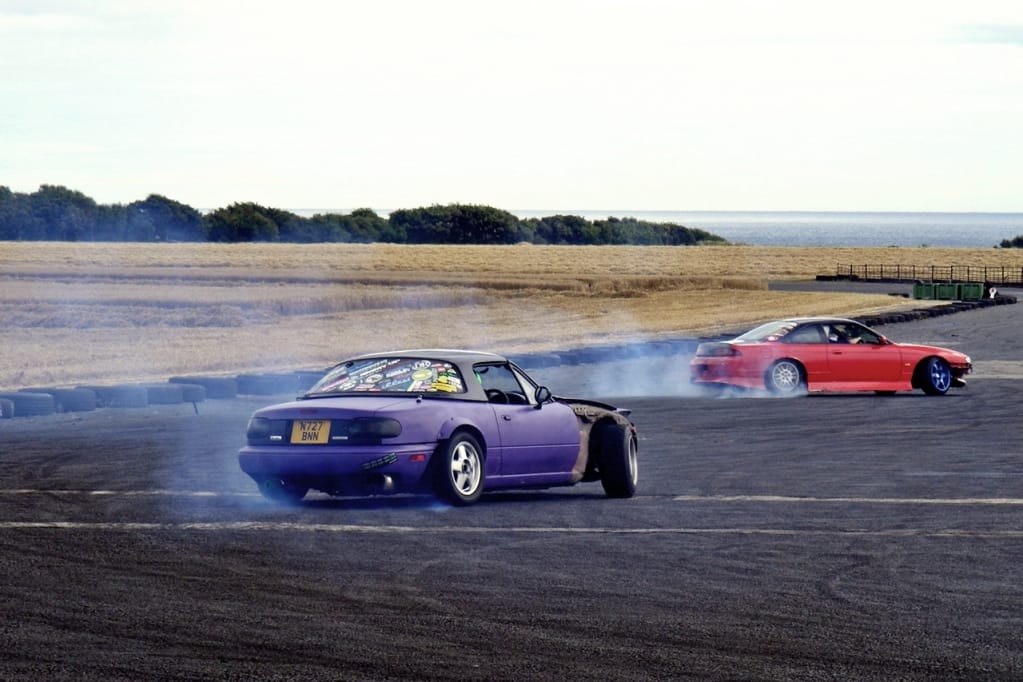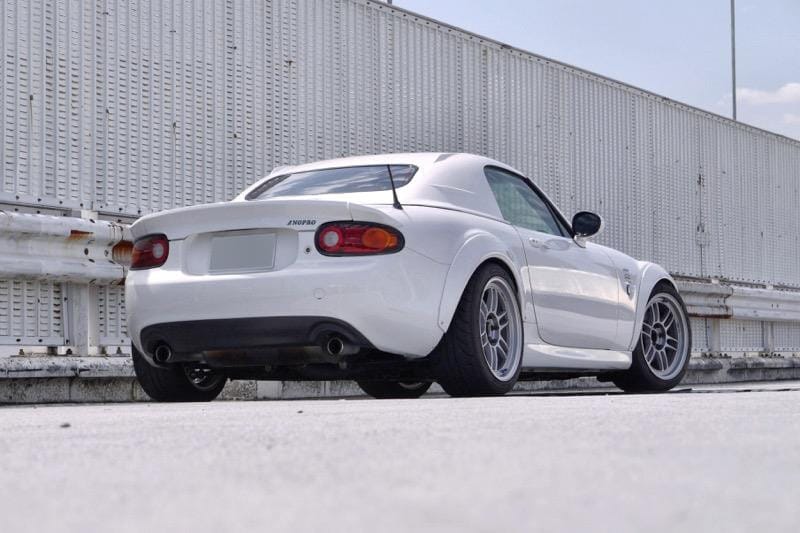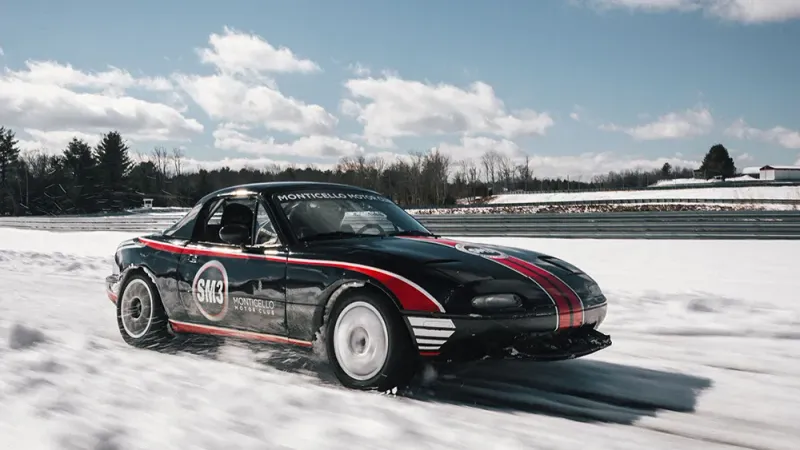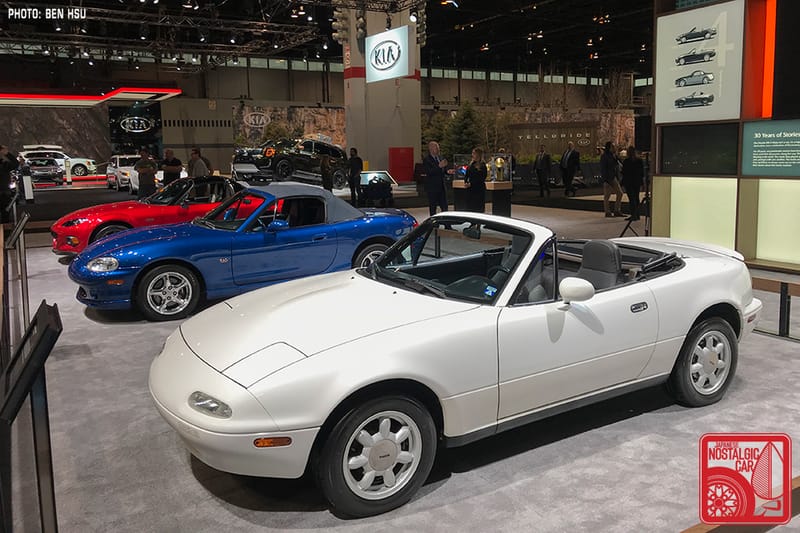Miatas in Drift Culture: Why the Little Roadster Works
From Ebisu matsuri festivals to local skid pads, Miatas proved that balance beats brute force. Their 50/50 weight split, short wheelbase, and low costs make them perfect drift trainers. Forum culture cemented the recipe: grab a cheap NA/NB, weld the diff, add coilovers, and invest in seat time.

Miatas earned a drift passport the old-fashioned way: they’re cheap to run, super light, and beautifully balanced. The car’s near-50/50 weight split and short wheelbase make it react instantly and teach clean inputs, which is exactly what you want when you’re learning initiations and linking turns at low to medium speeds. Mazda baked this personality in from day one, and people have slid MX-5s everywhere, from parking-lot skid pads to pro demo shows.
Miatas popped up early at Japan’s drift matsuri events like the multi-day Ebisu festivals, where reliability and low operating costs matter more than headline power. Those marathons, and the internet, spread the “light, low-power, lots of seat time” gospel worldwide. On the other end of the spectrum, Mad Mike Whiddett’s wild quad-rotor “RADBUL” MX-5 proved the silhouette could still steal a show, even if Miatas are rare at the very top level. In between those extremes, forum culture in the UK and US pushed a practical recipe: buy a cheap NA/NB, weld the diff, add coilovers, learn clutch-kicks, and spend your money on track time instead of dyno sheets.
Which Miata? NA, NB, NC, or ND
NA (1990–1997) and NB (1999–2005). These are the lightest and simplest, which makes them cheap to fix when you overcook an entry. Early NA6 cars used a viscous LSD, while later NA8s and many NBs got Torsen units that are strong and street-friendly. Just know a Torsen can act open if a wheel fully unloads, which is why many grassroots drivers weld an open 1.8 diff for consistent lock. Parts support for angle kits, hydro handbrakes, and seating is massive.

NC (2006–2015). Longer wheelbase, more torque, multi-link rear, and bigger brakes make the NC calmer at speed and very receptive to power. Turbo options are mature and deliver a wide, friendly torque band that suits drifting. Angle solutions exist, just not as deep a catalog as NA/NB, but the chassis rewards commitment and grows with you.

ND (2016–present). It’s the stiffest and most modern, but also the most expensive to bin. Electric power steering changes the feel game a bit, yet angle kits and tuning options are available, and serious builds either boost the Skyactiv-G or go for an engine swap. The ND’s media presence, thanks to high-profile demo cars, keeps it in the drift conversation even if most beginners start older and cheaper.

The Core Setup
Differential. A welded open diff is the cheapest, most predictable path to “always locked.” Torsens are tough and great for dual-purpose street cars, but they can behave open if a wheel stops during a handbrake pull or a big curb drop. Both work, just understand how each feels on initiation and correction.

Steering Angle and Self-Steer. You can begin with rack spacers and a knuckle mod, or jump straight to a purpose-built angle kit. On NA/NB, the well-known options increase total lock, tidy up Ackermann for drift, and effectively quicken the steering so transitions feel snappier and more catchable.

Suspension and Alignment. Start with quality coilovers and a slightly stiffer front bias, then refresh bushings; upgrade to poly or spherical joints where it makes sense. Use a drift-leaning baseline and iterate: front camber around −3° to −4°, as much caster as you can package (roughly +6° to +7°), and zero to slight toe-out; rear camber −0.5° to −1.5° with zero to slight toe-in. More rear toe-in calms transitions; less rear camber helps rotate a low-power car.
Handbrake. A well-adjusted cable handbrake is fine for early practice, but consistent entries and mid-corner corrections are easier with a hydraulic handbrake. Dual-caliper rear setups are the tidy, track-friendly solution on NA/NB.
Wheels and Tires. NA/NB cars love 15×8 wheels with 195/50 or 205/50 tires. That combo is cheap, everywhere, and keeps momentum up. Roll or pull fenders as offset shrinks, and run take-offs while you’re learning so you can stack laps, not bills.
Power Paths (How Much Is “Enough”?)
Seat-time spec (stock NA/NB, roughly 100–140 whp). This is perfect for learning clutch-kicks, feints, and linking small layouts. You’ll save clutches, axles, and tires while training your right foot to do the talking.
“Party car” turbo NA/NB (about 180–240 whp). Mild turbo kits on stock engines reliably land around 175–200 at the wheels with conservative boost, and they scale higher with supporting mods. Cooling, a proper clutch, and a safe tune decide whether you’re grinning or wrenching.
NC turbo (roughly 220–240 whp). This is a sweet spot for a wider, friendlier torque curve with near-OEM manners. It’s a great way to make the NC feel like a momentum car that doesn’t run out of breath on big entries.
K-swap (NA/NB/NC, with ND options emerging). A longitudinal K-series with the right mounts, subframe, oiling, and intake feels OEM-clean but much faster. Expect a broad NA torque band in the low-200s at the wheels and big headroom if you go boosted later.
Reliability and Known Pain Points
As angle, grip, and power climb, the weak links show up. Diff mounts and axles deserve attention; 1.8-liter hardware is the budget step-up for turbo torque, and keeping spare axles is never a bad idea. If you depower a steering rack, do it correctly by removing the piston and welding the torsion valve, loop-deletes add friction and slop. Turbo cars need real airflow: a better radiator, proper shrouding, and a conservative tune go a long way toward making a drift day boring in all the right ways.
Safety and Rules
Convertibles need rollover protection. Many grassroots organizers require at least a proper roll bar for convertibles during road-course events and more if you’re running tandems. As you move past solo laps, expect to add fixed-back seats with proper side mounts, in-date harnesses, and angle-friendly seat rails. Always read your local tech sheet and over-build rather than argue in the grid line.

Where to Start?
A simple, proven starting point looks like this: front camber between −3° and −4°, caster around +6° to +7°, and zero to a whisper of toe-out; rear camber between −0.5° and −1.5° with zero to a touch of toe-in. For wheels and tires, 15×8 with 205/50 works nearly everywhere, while 195/50 keeps it extra playful and cheap. For the diff, welded beats viscous for consistency; a Torsen is fine for street and dual-use, as long as you understand how it behaves when a wheel unloads.
Quick FAQs
Can I learn to drift stock? Absolutely. An NA or NB with a welded diff and a proper alignment will link small layouts and teach momentum driving without torching your wallet.
How much power do I really need? The sweet spot for easy links without constant breakage is roughly 180–230 whp. Past that, plan on stronger clutches, fresh axles, and more cooling.
Is an ND worth it? It’s the best chassis and feels the newest, and support for angle, boost, and swaps keeps growing. For beginners, cost and EPS tuning make older generations more sensible, but the ND is a fantastic endgame if you’ve got the budget.




